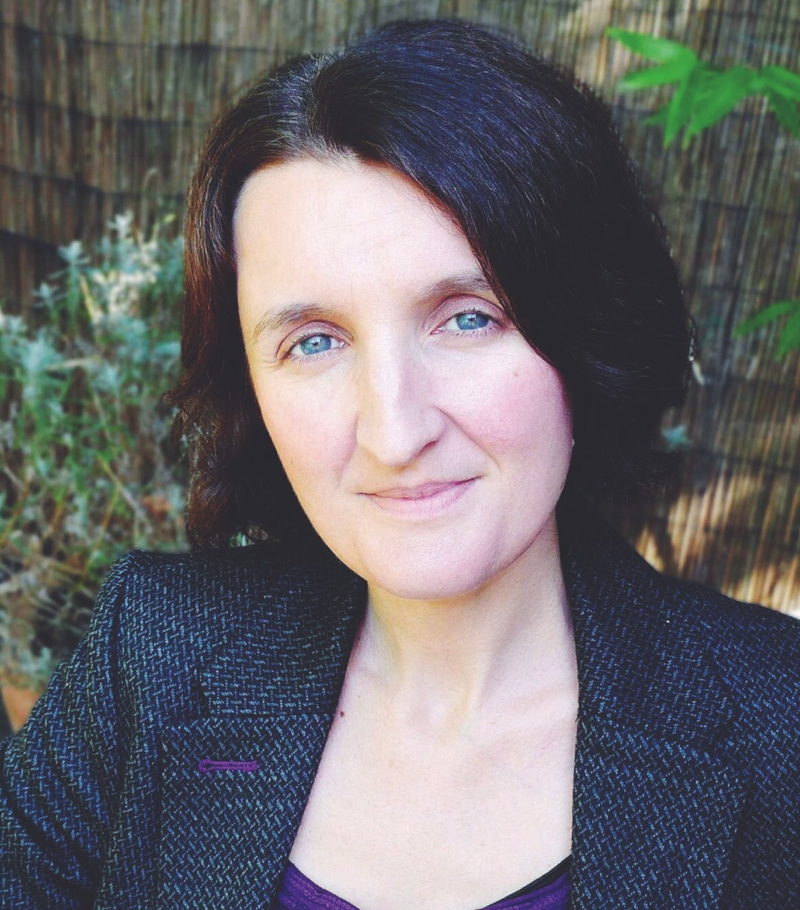Whispers Through A Megaphone (One, £12.99), an exciting debut from psychotherapist Rachel Elliot, is the story of Ralph, running away from a marriage, who builds a restorative friendship with Miriam, who hasn’t left her house in three years and can barely raise her voice above a whisper. Meanwhile his wife Sadie embarks on an adventure of her own.
You have written journalistically and short stories previously. Were you always gearing up towards a novel?
I’ve discovered that the novel is where I’m happiest and most comfortable, but the other kinds of writing feed into it. Journalism taught me conciseness, which I value – I love novels whose apparent simplicity allows something deeply emotional and ambiguous to happen, like Evie Wyld’s All The Birds, Singing or Tove Jansson’s The True Deceiver. And the stories I wrote previously often contained a thread of my novel, as if it was knocking and I hadn’t listened.
How influential was your background as a psychotherapist in creating the characters of both Miriam and Ralph?
Working as a psychotherapist made me acutely aware of how the stories we tell ourselves shape our experiences – deconstructing the story changes everything. Psychotherapy reveals the narratives that underpin our sense of identity and, to me, novels can do the same. We get to see how someone thinks, the assumptions they carry around, and how these affect their perceptions and the choices they make. Both Miriam and Ralph confront the stories they have bought into – Miriam that she is freakish and quiet and unable to lead a “normal’ life”, Ralph that his wife loves him – and this is the catalyst for change.
In your acknowledgments you thank the characters behind the novel – how much is it based on real people?
I used the word “characters” because in a way, that’s how I see us all. Obviously fictional characters are made up, but there is a dimension of this to “real” people too. We are not fixed – we make ourselves up as we go along and we’re all many different characters. The characters in the book are not based on real people but my relationships did influence them. I was very close to my grandmother, who died when I was eight, so the loss of her is part of Miriam. And I have very daft conversations with my friend Nadine, so this silliness feeds into Fenella Price. The list could go on.
Sadie’s blog and tweeting are a significant part of Ralph’s frustration in their marriage. Is this a comment on the impact of social media on our relationships?
It’s a comment on the ways in which social media can sometimes be used to make ourselves feel better. Again, it’s about the stories we tell, the narratives we post online. Sadie tweets and blogs about her marriage to make it feel like a real marriage – she is always trying to convince herself. But to be honest, Sadie and Ralph’s clash over social media came about because I wanted Ralph’s clients to be following Sadie on Twitter and chatting to each other in his absence – the idea made me laugh. And it’s also a matter of location – the story I wanted to write is firmly embedded in modern life, and people communicate on Twitter as often as they do over coffee and while walking down the street, so including social media felt important for a contemporary novel.
Why did you choose the woods as the place where the two characters find each other?
Going “deep into the woods” is really evocative – it has many cultural and symbolic associations. I love anything set in the woods, and in the book they represent the abandonment of routine, pretence and having to put on a show. They are a place to hide, to lose yourself. Miriam has hidden at home and, for Ralph, the woods is his place to hide for a few days – a departure from the noise and pretence of his everyday life. He is neat and contained, while the woods can symbolise the opposite, something primal and wild. They can be scary, dark, dangerous. So the woods signify Ralph breaking away from his life in some way. For Miriam they are the setting in which she discovers her own power and, later on, her ability to be open – to tell her story.
What is the role of music in the novel?
There are a lot of songs in the book, and each one came to mind while writing a section because they seemed to express something of the mood or atmosphere – to me at least. Two songs in particular kept playing for Miriam – Wicked Game and Mad World. I also had a playlist of very different tunes that I listened to while writing it, so the influence of music runs right through this novel.
Amy Forde



Leave a reply
Your email address will not be published.